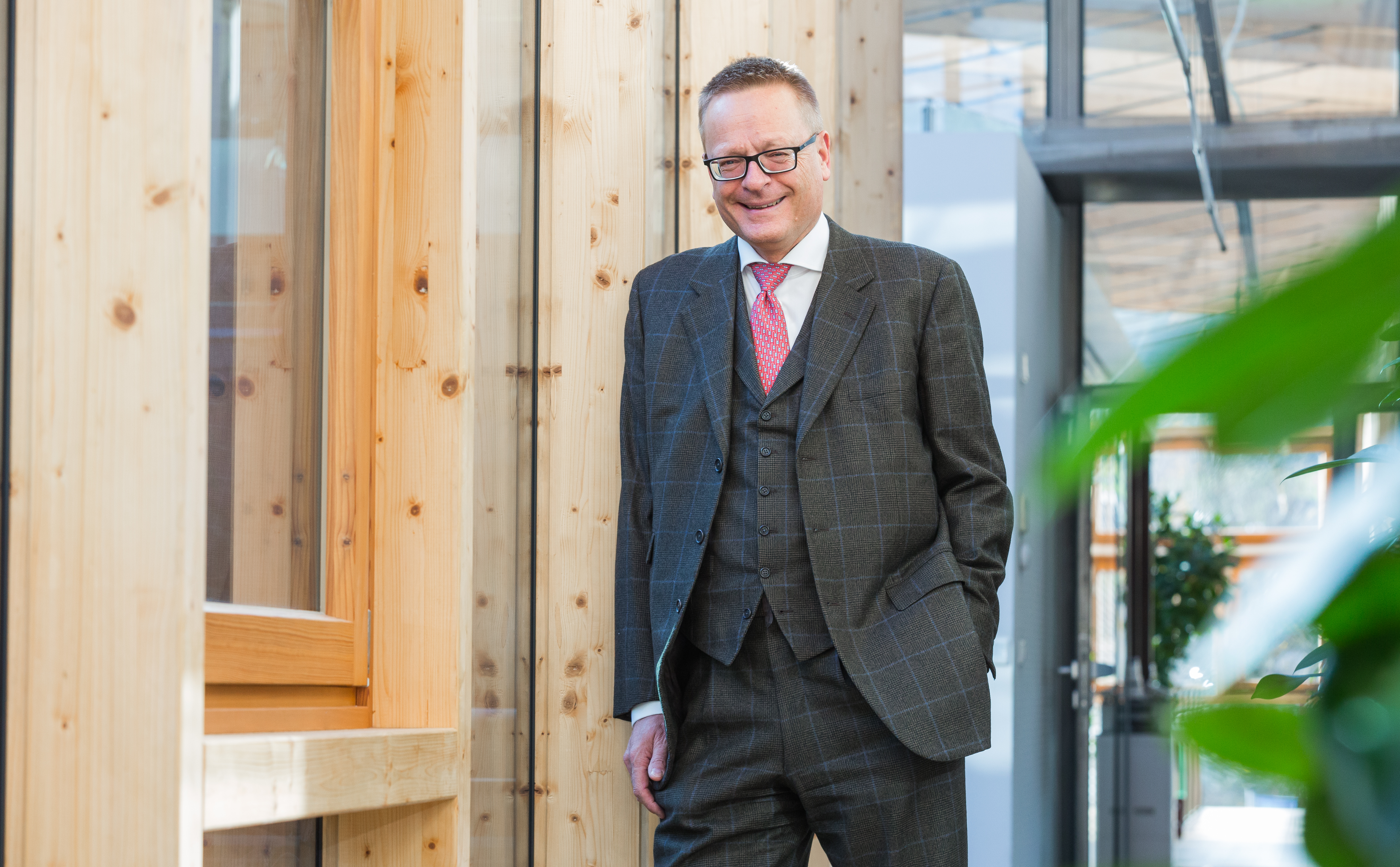MM TIMBER LOG: How wood as a building material contributes to reaching climate goals
Richard Stralz on the contribution of wood as a building material to the fight against climate change and on the ecological footprint of wood compared to conventional building materials.
Using wood reduces greenhouse gas emissions.
One cubic meter of wood stores 250 kilograms of carbon from one ton of CO2. And we all know that CO2 is a major contributor to the greenhouse effect.
This means that wood products serve to temporarily store carbon, and they continue to do so throughout their lifetime. When it comes to drastically reducing greenhouse gas emissions for a more climate-friendly future, there is no getting around the valuable raw material that is wood. We encounter products made of wood everywhere in our everyday lives: whether in toys, as windows, as parquet flooring or furniture, or even as wooden homes.
Wood products therefore act like a second forest, the carbon remaining bound in them. And of course, the wood removed from the forest is replanted through reforestation or natural regeneration. These young trees extract CO2 from their environment again by means of photosynthesis, store carbon and release vital oxygen into the air. Like in a perfect perpetual motion machine, the use of wood and reforestation permanently removes CO2 from the atmosphere and stores carbon.
Wood has up to half the ecological footprint compared to other building materials.
Around 40 percent of the total resource consumption on earth – materials and energy – is currently accounted for by the construction sector. Increases in efficiency and thus reductions in energy demand and heating requirements for building use will not be enough to reduce consumption.
A major contribution to achieving the climate targets is made by the choice of building material. Wood is simply unbeatable in this respect. Today, wood building products and innovative wood structures can in many cases replace conventional, carbon intensive building materials such as brick, concrete and steel. These are much more carbon intensive because they require much more fossil energy, such as oil or coal, in their production and transport to the construction site. Thus, wood has two effects: On the one hand carbon remains bound in wooden products and on the other, using wood prevents the use of carbon intensive materials and thus the emission of additional harmful greenhouse gases.
Wood can be recycled which is an exceptionally important factor when looking at its entire life cycle. At the end of its lifetime, a wooden building is simply disassembled and its valuable wood turned into many environmentally friendly, carbon-neutral products such as furniture boards, pellets or briquettes.
The more carbon-releasing materials are replaced by wood products the more carbon emissions into the atmosphere can be avoided. Arno Frühwald from the University of Hamburg has crunched the numbers: "… every cubic metre of wood that replaces other building materials reduces the CO2 emissions in the atmosphere by an average of 1.1 tons of CO2 ...” (Source: Holzprodukte sind Kohlenstoffspeicher, proHolz, only available in German)
Wood even improves resource efficiency by several factors: It grows back and is available in the region. 60 % of the surface of Styria, for instance, are covered by forests. Its forests grow more wood than is harvested. Thus, we have more than enough of this valuable resource.
Richard Stralz is the Chairman of the Board of Mayr-Melnhof Holz Holding AG, Head of proHolz Austria and the Chairman of the Supervisory Board of the Styrian Wood Cluster.
Sustainability & Raw material use
Wood as a building material
Wood as a raw material
Your media relations contact person
CONTACT





